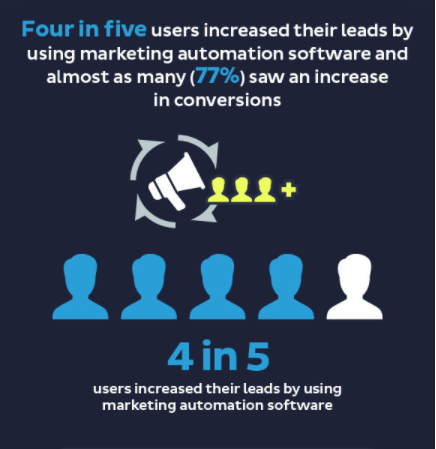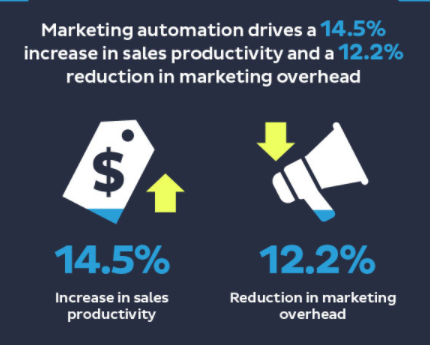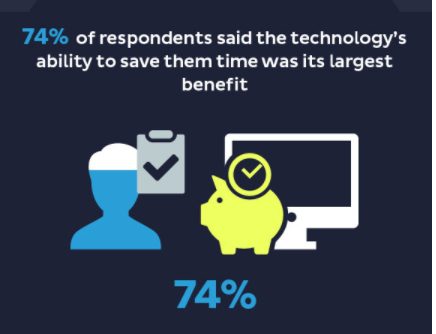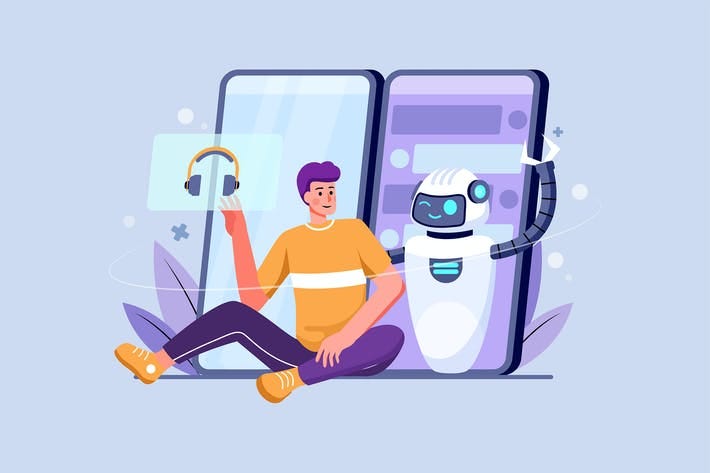 |
submitted by /u/RasaOpenSource [link] [comments] |
Category: Chat
-
YouTube series guide on how to build a chatbot using Rasa Open Source
-
Top 5 Examples of Conversational User Interfaces
Conversational User Interface (CUI) is an artificial interface with which you can communicate to either ask questions, place orders or get information.
Top-notch CUI’s offer a more human-like conversation. This helps in bridging the gap between physical and online conversations.
Many companies have started understanding the importance of conversational AI by incorporating them into their marketing strategies. Statistics show that automated conversational marketing companies witnessed a 10% increase in revenue within 6–9 months.
Even from a customer’s point of view, 86% of online buyers preferred quick and immediate customer support, which chatbots for small businesses provide.
There are two main types of CUI’s. First is the chatbots where the interaction and communication take place in the form of text. The second one is voice assistants like Google Assistant, with which you can talk to provide input.
Game-Changing Conversational User Interface Examples
Here are 5 of the top CUI’s and chatbots for business that cover all bases and provide a smooth and happy experience to all users.
1. Skyscanner — Travel Search Website
Skyscanner is an online travel agency that launched in 2003. It allows its users to compare and find cheap flights and hotels and also hire cars.
Skyscanner is the world’s biggest independent flight search engine. In 2016, it raised $192 million to grow its engine and services. In the same year, when conversational AI and chatbots started receiving more recognition, Skyscanner joined the league by introducing their Facebook Messenger bot.
The purpose of this chatbot is to help customers search for flights to any destination through a simple conversation.
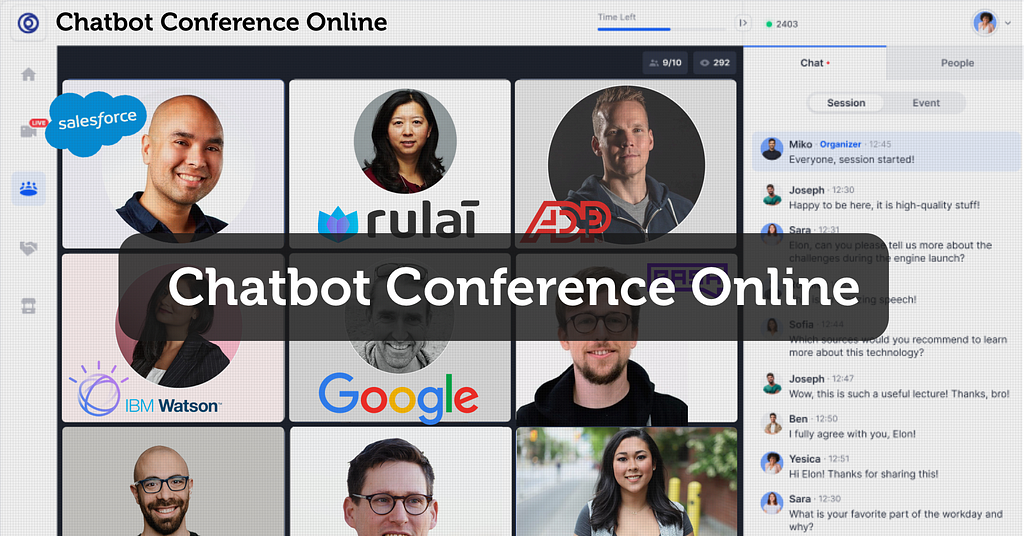
A Brief Walkthrough
Skyscanner’s Facebook Messenger bot begins well by providing the necessary information on its home page. By displaying information like “The world’s travel search engine” and “Typically replies instantly,” it tells you what it is capable of doing.
When you continue, the bot welcomes you by your name, thus providing a personalized experience. You can then find flight deals, explore new destinations, or get tips on the best time and route for traveling.
After selecting the origin city, destination city, and travel dates, the chatbot shows a list of flight options from various airlines along with their rates. It is also capable of sending alerts if there is any change in the pricing.
Once you compare and choose a flight, the chatbot redirects you to the website to complete the payment.
Few Brilliant Features
- Anywhere
The “Anywhere” feature is one of Skyscanner’s best features. If you are unsure of your destination, simply typing “anywhere” in the text box will display a list of travel suggestions from the origin city.
- Offers Constant Confirmation
Throughout the process of searching and selecting a flight, Skyscanner’s chatbot constantly confirms the cities and dates that you have chosen. It also allows you to change the details with ease.
Adapting to New Trends
Skyscanner is one great example of a company that follows and adapts to new trends. With many people using the Telegram messaging service, Skyscanner introduced a Telegram bot to target a wider audience to search for flights and hotels easily.
The bot can even understand colloquial terms like “next weekend” or “next Monday” and display the correct options.
Skyscanner has also added a live chatbot on the Skype platform.
In 2016, Skyscanner also partnered with Amazon’s Alexa allowing users to search for flights through a voice conversation. By asking simple questions “Where are you flying from?” and “Where are you flying to?” Alexa can get the travel details from you and talk you through the relevant flight details.
Results
The easy-to-use conversational user interface of Skyscanner is effective in providing relevant details to all customers. In just a few years since the chatbot’s introduction, Skyscanner managed to pass one million traveller interactions with chatbots across all platforms by 2019.
All the minute details show the thought put into designing the chatbot, making it a huge success.
Trending Bot Articles:
2. Automated vs Live Chats: What will the Future of Customer Service Look Like?
4. Chatbot Vs. Intelligent Virtual Assistant — What’s the difference & Why Care?
2. Duolingo — Language Learning Platform
Duolingo is a language learning platform that provides its services for free to all users on its website and mobile app. Officially released in 2012, Duolingo now offers courses in 38 languages, including fictional languages like Klingon.
Over the past few years, Duolingo has started to leverage the power of artificial intelligence to alter the courses and make them more convenient for the user.
With the help of a conversational user interface, Duolingo has revolutionized the language learning sector.
Duolingo is an example of a great company that analyzes and understands their problems and brings out solutions to overcome them.
Duolingo understood that the most significant problem they would face would be helping users effectively learn a language. Conversing is what helps learners practice and retain the language. Simply reading words and phrases on a screen would not help in the same way.
The Solution
- Chatbots
To overcome this obstacle, Duolingo implemented the use of AI-based chatbots. They created and assigned a few characters to the bots, allowing you to have a real conversation in your learning language.
If you get stuck and don’t know how to reply during the conversation, you can also use the “help me reply” option to get assistance from the bots.
- Conversational Lessons
Duolingo recently took conversational learning to the next level by introducing conversational lessons. This new feature offers practice with words and phrases used in real-life scenarios and will enable you to put those words together to form meaningful sentences.
Duolingo allows you to listen and repeat commonly used sentences. It also corrects you when you speak or type the wrong word and explains its correct usage. This way, you can learn a language with Duolingo through textual and voice conversations.
As you learn more words, the difficulty levels increase, giving you thorough learning of the entire language.
Outcome
Duolingo’s chatbots and conversational lessons give the user the experience of having a conversation in reality. Duolingo is known for its conversational AI and conversational marketing strategies.
Since its inception, they have added over 500 million registered users, out of which 42 million are active every month.
The coronavirus lockdown between March 11 — April 30 increased Duolingo’s users by 30 million people. These statistics show the magnitude of Duolingo and its CUI’s success.
3. Domino’s — Pizza Restaurant Chain
Domino’s is one of the most successful pizza restaurant joints across the globe. Today, Domino’s operates 17,800 stores in more than 90 countries selling an average of 3 million pizzas every day.
Over the years, Domino’s has introduced different ways through which customers can order food. One such way is online ordering.
From 2017 to 2020 alone, Domino’s made 27 million Facebook impressions. This figure alone shows the success of online ordering. But Domino’s did not stop there. They introduced CUI into their business, allowing customers to order food through a bot on Facebook Messenger.
Here are some highlights of Domino’s chatbot for business.
Meet Dom
Domino’s named their chatbot “Dom,” giving it a character. This makes the user feel that they are conversing with a person on the other end rather than a computer. Dom makes digital ordering more conversational and simple.
Pre-set Options
Dom has pre-set default options programmed into its interface. So, when you want to place an order with Dom, options like “Pizza,” “Pasta,” “Sandwiches,” etc., show up on the screen. All you have to do is select an option and continue to the next step. This eliminates the need to type in your order, thus saving time.
Dom is also aware of current deals and allows you to apply a deal or coupon to your order.
Constant Summarizing
The entire process of ordering a pizza occurs in multiple steps. It includes choosing the size of the pizza, crust, and toppings. Dom makes sure that it constantly summarizes your order while simultaneously adding new information to it at every step.
Dom also simplifies the process of making changes to the order. Even if you are in the last step (say you are choosing toppings) and feel like changing the pizza crust, Dom will make that change for you while retaining other information (like pizza size) in your order.
Accepting its Shortcomings
When Dom is unable to understand the customer’s input, it apologizes and lets the customer know about it. This gesture is appreciated rather than displaying information that is not related to the customer’s request.
Domino’s Voice Ordering
Dom’s skills also include its ability to place orders through voice commands from users, making pizza ordering easier.
Domino’s also offering its services on voice-based CUI’s like Amazon Alexa, launched in 2017, and Google Assistant, launched in 2019. Through these mediums, you can place your most recent order or track your ongoing order by asking the voice bot to do so.
Domino’s Anyware
Apart from ordering through chatbots and voice-based CUI’s, the Domino’s Anyware initiative allows all users to literally order from anywhere. This includes ordering from your car, smart TV, smartwatch, and through tweets, SMS, and zero-click app.
Interface
To put it in a nutshell, Domino’s conversational AI chatbot makes online pizza ordering simple for all customers. The linear flow in Dom’s CUI makes it easy to order food when compared to other alternatives.
4. Lark — Digital Healthcare Platform
Lark is a digital healthcare company that offers services in various sectors. It keeps track of your daily activities like food habits and sleeping patterns and aims at improving your fitness and health. It helps people in reducing weight and also focuses on reducing stress and anxiety among people.
Lark’s chatbot is an app that dedicates itself to all these activities. Users can interact with their bot through text, voice, and button options.
Varied Responses
One aspect that sets a fundamental difference between ordinary bots and top chatbots like Lark is its varied responses to the same topic. Even if you type in the same sentence repeatedly, Lark will respond with a different answer. This small attribute enormously improves its human-like conversational style.
Lark’s responses are also friendly and caring. This is crucial, especially for conversations about mental health and stress. These responses help in motivating the users.
A Knowledgeable Bot
While conversing with a healthcare bot, knowledge about everything must be its top priority. Lark is one such bot that knows stuff related to its field as it was created with the help of experts and professionals in the healthcare sector.
For instance, when you tell Lark what you ate for lunch, it can recognize it and place it under a particular category (like veggies or meat). It can then make recommendations (like switching to other categories) so that you consume all kinds of nutrients to maintain a balanced diet.
In a way, Lark acts as your fitness coach and nutritionist.
Proven Research
- It increased the consumption of healthy meals by 31%.
- An in-app survey showed a 100% response rate.
- High-risk diabetes patients using conversational AI lost a magnitude of weight compared to the loss achieved with lifestyle change programs.
- The health coach also encouraged positive behavioral changes.
Achievements
Over the years, Lark and its conversational user interface have received a few achievements.
- Named “Best of 2016” by Google
- Business Insider named them one of the “10 Most Innovative Apps in the World” in 2016
- Selected as a finalist in the “Fierce Innovation Awards — Healthcare Edition 2020.”
5. Erica — Bank of America’s CUI
In 2018, Bank of America launched their own chatbot “Erica” to help their customers in their transactions on the mobile app.
Created using AI, predictive analytics, and cognitive messaging, Erica can help customers in numerous ways like,
- Making payments
- Checking account balance
- Tracking daily expenditure
- Locating past transactions
- Checking FICO score
- Receiving notifications on pending bills
Highlights of Erica’s Conversational User Interface
- Necessary Information on the Home Page
The home page of the app displays a greeting message that welcomes the user. Through the prompt at the bottom of the page, you can type or voice out your task or query. Erica also displays a message, “See what Erica can do,” which shows all its functions when clicked upon.
- Versatility
Erica can efficiently understand voice, text, as well as tap inputs from the users. Erica indeed shows its versatility when it comes to understanding the customers’ varied questions. Currently, Erica can understand almost 500,000 different variations of the questions that customers ask.
Erica’s time-to-resolution averages around three minutes only via voice within the app. The voice-first attitude of Erica has redefined banking, taking it to a whole new level.
- Provides Meaningful Insights
Erica provides meaningful insights that help customers in making better decisions. These insights can also help in saving money. Erica can do this by suggesting stuff like putting the cash rewards from your credit cards to better usage.
- Simplified Feedback System
Instead of asking detailed questions or sending out long forms, Erica asks for feedback subtly. Once the tasks are completed, a smiley and a sad emoji appear. You can easily give feedback by tapping on any one of them.
Analysis of Erica’s Success
Around 500,000 new users make use of Erica’s services every month. At the end of 2019, Bank of America stated that Erica alone had witnessed over 10 million users and was about to complete 100 million client requests and transactions.
These statistics show that Bank of America hit the bulls-eye with its conversational AI.
Why is Conversational User Interface Important?
Using Artificial Intelligence (AI) and Natural Language Processing (NLP), CUI’s can understand what the user wants and provide solutions to their requests.
Some of the best CUI’s provide the following benefits to the customer and the owner.
- Provide a personalized and unique experience to all the users
- Offer 24×7 support to all customers and clients, eliminating the need for man-power for the same job
- Can efficiently speak to thousands of customers at the same time
- Convenient to use as they are user-friendly
- Available across various platforms and channels
- Easy to set up for business owners as it requires little to no knowledge in coding
- Real-time analytics help business owners and marketers improve their marketing strategies.
Going through these game-changing conversational user interfaces and chatbots for business, it is clear that using them in conversational marketing strategies increases a company’s sales and leads to more happy customers.
Most of these chatbots also prove that thinking about all the small and minute details and incorporating them in the CUI’s can take the company a long way forward.
Don’t forget to give us your 👏 !
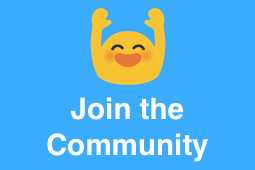
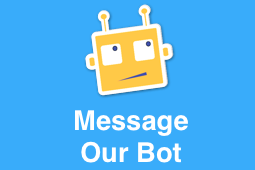
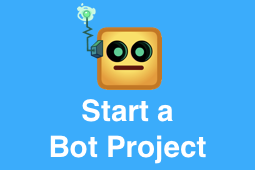
Top 5 Examples of Conversational User Interfaces was originally published in Chatbots Life on Medium, where people are continuing the conversation by highlighting and responding to this story.
-
How can you use WhatsApp for customer service? [Tips + best practices]

Globally, there are about 3 million companies that use WhatsApp business to reach and engage their customers. 84% of SMBs believe that WhatsApp is a very effective way for them to communicate with their customers.
Wondering why so many companies are going all out to serve their customers over WhatsApp? Want to know how you could scale up WhatsApp customer support?
We’re answering all your questions in this article.
Why should you use WhatsApp for customer service?
WhatsApp has 2 billion active users in 180 countries. It’s almost certain that your customers are using WhatsApp on a regular basis. To make it even better, 70% of WhatsApp users check the app daily.
And guess what, providing customer support over WhatsApp reduces customer effort by eliminating the need for them to always visit your website, write an email, or even get on a phone call in order to reach you.
In fact, it makes things even easier by making it unnecessary for them to even write a message at all. They can even have voice interactions with you over WhatsApp.
You can even use WhatsApp chatbots to send customer service updates and notifications automatically. And you know that there’s a high chance that your customers would reach these messages (the average open rate for WhatsApp messages is 98%), unlike with email customer support where it can sometimes feel like a game of chance — will they open this time, or will they ignore your email?

How can your company be found on WhatsApp?
For a customer to be able to reach you on WhatsApp, they’d need to have your phone number, they can’t just use the search feature on WhatsApp to find your business if they haven’t interacted with you on WhatsApp before or don’t have your WhatsApp Business Phone Number.
But there are ways to improve discoverability.
You could display your phone number on your website, but rather than making them save your number and then open WhatsApp, you could make things easier for them.
For starters, you deploy a widget on your website that allows them to directly send you WhatsApp messages.
Bonus tip:Here’s how you could add a WhatsApp button to your website.
You could even display a WhatsApp QR code for your business on your physical and digital properties that your customers scan to find and message your business on WhatsApp. You could even include a customized message that is pre-populated when the chat opens up, thus making the interaction easier for your customers.
How can you use WhatsApp for customer service?
1. Answer customer questions
This is the most obvious thing you can do to provide customer support over WhatsApp. Your customers spend a lot of time using WhatsApp, now if they do end up having questions regarding your offerings, it’s only right that they should be able to reach you over the app that they’re already using regularly, instead of having to open (or worse, download) another app.
2. Share notifications
With the WhatsApp business API, you get to send notifications regarding payments, account updates, shipping information, etc., even to customers who haven’t interacted with your business on WhatsApp before.
3. Sending purchase confirmations
WhatsApp can even be used to send purchase confirmations and order details to your customers, thus keeping things transparent. In addition to this, a WhatsApp chatbot can even be used to share personalized product recommendations, drive sales, and collect payments from your customers.
4. Pushing out reminders
You could even send payment, booking, and appointment reminders over WhatsApp.
5. Rescheduling bookings
WhatsApp can be used to schedule and reschedule appointments, reservations, and other bookings. The process becomes even easier for you when you integrate your WhatsApp support solution with your customer service and marketing software like spreadsheets and calendars.
6. Modifying subscription plans
You can even help your customers change their subscription over your WhatsApp chatbot, simplifying upselling and cross-selling.
Trending Bot Articles:
2. Automated vs Live Chats: What will the Future of Customer Service Look Like?
4. Chatbot Vs. Intelligent Virtual Assistant — What’s the difference & Why Care?
How can you handle a large number of support requests on WhatsApp?
Earlier, the only way to provide support on WhatsApp was for a single customer service agent to handle conversations, either using WhatsApp on your phone or using WhatsApp Web.
Scaling your customer support up and handling a large number of customer support requests was just not possible. There was only so much a single agent could do.
But in August 2018, WhatsApp made it possible for companies to get access to its APIs. Now, with the WhatsApp Business API, you have the ability to deploy a chatbot that can automate these customer service requests and deliver instant answers to your customers.
Built on the Engati platform, your WhatsApp chatbot uses artificial intelligence and natural language processing (NLP) to understand your customers’ questions, the actual intent behind them, and provide them with the most appropriate answer in an instant.
You can scale your WhatsApp customer support even further by using live chat along with your chatbot, allowing you to use as many agents as you need to handle your customer requests, instead of forcing you to have just one agent handling all your support requests.
When your use Engati Live Chat, your customers service representatives will also have access to the context from past conversations with those customers, as well as from conversations with those customers across other channels, so they’ll be able to give your customers answers that are tailored for them and won’t have to ask your customers to repeat themselves at all.
How can you send notifications and updates on WhatsApp?
Generally, WhatsApp only allows you to send messages to customers who have interacted with your business within the past 24 hours. Those messages are known as session messages.
You won’t be able to send notifications and updates to your customers solely using session messages. A large number of these notifications would have to go to customers who have not interacted with you on WhatsApp within the last 24 hours. That’s where message templates come in.
You can use WhatsApp message templates if you have the WhatsApp Business API. These templates are message formats that are pre-approved by WhatsApp. You can use them to send notifications, account and payment updates, delivery status information, and other customer service messages even to customers and users who have never interacted with your business at all.
You can create your own message templates which can contain text as well as rich media. Another major benefit of using these message templates is that you could have interactive buttons in them that could either have quick replies (thus eliminating the need for your customers to bother typing messages out themselves) or CTAs that lead to your website or encourage customers to call your team up.
WhatsApp customer service best practices
1. Use chatbots and live chat
Your AI-powered WhatsApp chatbot can handle about 80% of customer conversations on its own. That means you really only need to send 20% of your customer queries to your live agents.
And the good news is that you can keep updating your chatbot and train it to answer these new, unexpected questions. So your customer service representatives can concentrate on handling complex issues in greater detail, instead of simply trying to hurry them along.
To make it even better, your agents can take over the conversation from your WhatsApp chatbot at any point.
This powerful combination of chatbots and live chat helps you get more done at a faster pace, reducing your resolution time, and improving your customer experience by providing your customers with instant answers to all their questions.
2. Integrate with your other customer service software
Streamline your support operations by integrating your WhatsApp chatbot + live chat solution with your CRM, Ticketing system, and other software like Google Sheets and Google Calendar.
3. Enable voice interactions
Voice is the future. It allows people to multitask, getting more done with less attention, without requiring as much focus. Virtual assistants like Siri and Alexa are already demonstrating this trend.
Your WhatsApp chatbot can make life easier for your customers, by answering customer support questions through voice interactions. All you need to do to enable voice input is check a checkbox and then upload a JSON voice file. It’s that easy.

Enable voice input on WhatsApp chatbots
4. Go business casual
WhatsApp as a channel tends to be a less formal environment than emails. It’s a chance to display your brand’s personality. Now, that doesn’t mean you go completely casual, you need a balance.
So, be a little less formal, but make sure you still come across as professional and helpful.
And make sure your chatbot reflects your brand personality as well. The key is to let your customers know that they’re talking to a bot while making them feel like they’re talking to a human.
Your WhatsApp chatbot should also be able to make small talk. Not all your customers will get to the point immediately. To allow your Engati WhatsApp chatbot to do that, all you need to do is open up the Settings section in the Train tab and enable small talk.

Enable small talk on your chatbot
5. Speak your customers’ language
You want your customers to accept you as one of them. If you don’t speak their language, you’ll come off as an outsider.
You want them to trust you and feel comfortable talking to you. That’s why you need your WhatsApp chatbot as well as your live chat agents to have the ability to engage your customers and interact with them in their language.
6. Use rich media
You don’t want your interactions to be limited to text messages. Make your conversations more interactive by using images, video, and more.
You could even share documents with and receive documents from your customers over WhatsApp rather than forcing your customers to switch to an email conversation.
7. Reduce effort, use buttons
By their very nature, WhatsApp chatbots are intended to reduce customer effort. It’s all about letting them reach you over the app they’re already using instead of having to hop across apps and platforms.
Simplify the interaction even further by sending interactive buttons with your chatbot messages so that they don’t need to bother typing text messages out.

Use interactive buttons on your WhatsApp chatbot
8. Let your customers know that you’re on WhatsApp
Your customers are not going to find out in a dream, you need to let them know that they can reach you and get their queries answered and issues resolved over WhatsApp.
Mention it in your website, use a widget on your website to lead your customers to your WhatsApp bot, mention your WhatsApp number in your email signatures, you could even go ahead and put up QR codes on your physical and digital properties to make it easier for your costumes to reach you.
9. Update your WhatsApp Business Profile with the necessary information
Fill out your profile with all the necessary details that your customers would be looking for. A small description of your business, your business hours, a link to your website, your address, and the category your business falls under.
Congratulations! You are now ready to support your customers in their preferred language, over their favorite chat application — WhatsApp!
This article about the “How can you use WhatsApp for customer service? [Tips + best practices]” was originally published in Engati blogs.
Don’t forget to give us your 👏 !



How can you use WhatsApp for customer service? [Tips + best practices] was originally published in Chatbots Life on Medium, where people are continuing the conversation by highlighting and responding to this story.
-
How to Prepare Your Organization for Marketing Automation
Marketing automation strategy has changed the way businesses function, deliver and grow. Automating marketing activities is not only empowering employees by streamlining their workflow and saving time but pacing up marketing processes to enhance customer satisfaction and retention.
Marketing automation dates back to 1992. But, it started taking shape in the middle of the 2000s. The impact of marketing automation can be best understood via these insightful facts by Invespro:
- Marketing automation software helped nearly 80% of marketers increase their leads.
- Sales productivity rose by 14.5% after marketing automation was introduced in the company with a 12.2% reduction in marketing overload.
- Time-saving was the biggest benefit of automation, as stated by 74% of respondents.
If you also wish to utilize a marketing automation strategy and shift the business dynamics, you need to do some groundwork. You’ll need to rethink what you are aiming at and what assets you currently hold.
In this article, we will cover the following topics:
- What is marketing automation?
- What is marketing automation software?
- How can automation fit into a marketing strategy?
- 10 Steps to prepare your organization for marketing automation success
- Top 5 marketing automation tools
Just follow along and discover how you can introduce marketing automation in your existing business strategy.
Let’s get started.

Marketing Automation Definition
Marketing automation is the process of automating repetitive tasks using various marketing automation platforms. Using technology, you can personalize marketing messages, reach out to more customers, and nurture sales lead in the fastest and most efficient manner possible.
What Is Marketing Automation Software?
A marketing automation software is a platform that helps marketers manage marketing campaigns across several channels. These advanced platforms are designed to accelerate and scale a company’s marketing efforts while personalizing every customer interaction.
Here are 10 best-selling marketing automation software features that help to manage end-to-end internal processes and streamline business activities across sales, marketing, IT, and operations departments:
- Email designing and scheduling
- Lead generation and nurturing
- Customer relationship management
- Real-time customer support
- Target audience segmentation
- Social media automation
- Internet marketing
- Workflow Automation
- Content Management
- Reporting and Analytics
How Can Automation Fit Into a Marketing Strategy?
Do you know that 90% of the employees are stressed by repetitive and manual tasks? According to a study by SnapLogic, repetitive tasks turn marketers into mindless zombies, which significantly stalls business productivity, growth, and revenue. The sad part is that these tasks can be easily automated.
Incorporating automation in your marketing strategy helps reduce problem resolution time, makes the teams more creative and efficient so that they can get more done in less time.
If you search online, you will find a number of marketing automation tools, which can seem very attractive and promising. It can be very tempting to pick up tools for email marketing, social media marketing, etc.
Do know that just by having a marketing automation tool, one cannot nurture prospects and convert them into delighted customers.
You have to know how marketing automation works while understanding the components and nuances of marketing automation first.
The best marketing automation strategy has customers at the core. Marketing automation is best implemented in the context of a flywheel and not a funnel, where you don’t solely focus on moving the lead from marketing to sales and customer service, but follow the same path repeatedly.
Trending Bot Articles:
2. Automated vs Live Chats: What will the Future of Customer Service Look Like?
4. Chatbot Vs. Intelligent Virtual Assistant — What’s the difference & Why Care?
How to Prepare Your Organization for Marketing Automation
- Have Clear Goals
Are you thinking of creating a marketing automation plan? Great. But, here are a few questions that you must answer first:
- Why do you want to automate marketing processes?
- What results do you want to achieve?
- What are your long-term business goals?
Automated marketing campaigns are excellent for businesses. But sadly, it is not meant for every business.
Without clarity, you might only be following a herd, without knowing whether you should be a part of it or not.
2. Involve Key Stakeholders
There are several decision-makers or stakeholders in any organization who make sure a project is implemented correctly.
The stakeholders can include business analysts, executives, people from sales & marketing teams, and IT departments.
Schedule a meeting with your stakeholders or get them in the loop through email to get inputs on the automation campaign and redefine business goals if needed.
3. Decide KPI’s for Your Goals
Key performance indicators (KPIs)- You might find them fancy and daunting. But they are as important as having marketing automation technology in the first place.
Do you know why?
KPIs help you know if your marketing automation efforts are paying or not. It gets you valuable feedback on how you can improve your business.
Your KPIs for the automation campaign should include metrics like funnel conversion, customer satisfaction, revenue, profitability, and other strategic business goals.
4. Build a Marketing Automation Team
At first, hiring full-time employees for marketing automation can seem expensive, or assigning a couple of team members from within the department can appear daunting.
No matter how you do it, it would be helpful if you have marketing automation experts who can act as a bridge between the sales team and the target audience. They can follow a sound marketing strategy and use the automation tools to ace the game with foolproof internal coordination and smart tactics.
The various roles can include:
- Project managers
- Content writers/developers
- Web designers
- Email/ lead nurturing specialists
- Analytics specialists
To build a sustainable marketing automation team, consider certain variables, like your company size, goals, budget, and resources.
5. Identify What Can Be Automated
Every business has a set of routine, recurring marketing tasks that need to be taken off from the to-do lists daily.
Such time-consuming tasks can include activities like:
- Tracking the progress of marketing campaigns and assigning tasks to team members.
- Writing social media posts in batches and disbursing them on a daily, weekly, or monthly basis.
- Planning meetings, file sharing, and communication with the team members about project status updates.
- Sending emails to the customers on birthdays or anniversaries or responding to their queries
Automation is the only way your team can save time and achieve more in a day. Create a list of your individual needs, and look for marketing automation tools accordingly.
6. Have Engaging Content
When you are trying to capture customers’ attention, you need content that connects with the users at various lead generation and nurturing stages.
If you already have content, do a content audit and get the answer to certain questions like:
- How is your existing content performing?
- Which pages are working better than others?
- Is your content taking you closer to your goals?
- What is missing in your content?
With such an insight, you can fill the gaps where the content is not touching a specific aspect of the user experience. You can go ahead and repurpose all your existing content into a graphical format with a tool like Visme or Picmaker. Finally, you can use the power of automation to repurpose the content for whitepapers, guides, email marketing, or SlideShare.
7. Identify Your Target Audience
Understand that marketing automation aims at reaching out to the right audience at the right time with the right message.
Before putting out content and automating marketing, work on creating customer personas.
This way, you can personalize the content for different target audiences, map it to their different decision-making stages till purchase, or create new content altogether (if needed).
The more they are engaged, the easier they’ll take action, and share the experience with others to encourage them to buy.
8. Create a Smart Content Calendar
A content calendar is the best way your content, sales, and marketing teams can stay organized and on top of their games.
For an automation software application to work best, have a content library ready all the time. Choose your social media channels to establish content flow.
Find out what needs to be tracked. Get your team to review the content and give feedback to improve the social media posts further.
9. Choose Automation Tools
The beauty of having marketing campaign automation software is that only a few people can achieve results that may take hundreds of people to accomplish manually.
Analyze your sales funnel and see which part can be improved with automation, depending on your goals and content assessment.
To begin with, jot down a list of tools you find good. Next, visit their website to learn about the features and pricing. Go through the best review sites like Capterra to better learn about the products through positive and negative user reviews.
10. Analyze Automation Deployment Success
Time saved followed by money saved is probably the best metrics to analyze automation deployment success.
Many testing methods include automated tests for mundane tasks ranked from low risk to high risk or low priority to high priority.
Many experts have suggested that automation is successful if it can save anywhere from 2 hours in a day or 4 days in a month.
Another metric is to track the number of marketing risks and see automation mitigates how many of them.
Top 5 Marketing Automation Tools You Must Consider
Offered by Oracle, Eloqua is a software as a service (SaaS) platform designed for marketing automation, and sales lead generation.
With this tool, marketers can monitor customer’s buying cycles and build targeted campaigns through multiple channels like email, web, social media, etc.
ProProfs Help Desk is a feature-rich tool that helps the marketing teams access all the product-related queries through a shared inbox. They can discuss leads internally using internal comments and respond to customers faster using canned responses.
With this tool, the agents can collaborate and be in sync with other teams to gather the best results for their marketing activities.
Marketo is a well-established marketing automation software that offers impressive capabilities to automate marketing programs, develop personalized communications, build strong customer relationships, and measure marketing ROI for business success.
The behavior tracking feature helps marketers engage the right customers at the right time.
Constant Contact is a popular tool for email marketing planning and automation to meet business goals.
Through this platform, segment contacts, send targeted emails to new leads, nurture leads with personalized emails, and get new contacts through sign-up forms and social media ads.
Any automation list will be incomplete without a social media automation tool. Buffer is a market-leading tool that lets you schedule and publishes posts across your social media accounts.
Its robust analytics helps you measure content performance and develop successful marketing and social media strategies.
Automate Marketing Efforts & Grow Your Business
When you make automation work for your company and nurture customers with constant support and relevant content, you build long-term relationships and increase revenue generation opportunities.
But, before choosing any automation tool, make sure you know your business goals and identify areas that can be significantly improved by automation. Review the tools for their features, prices, and any hidden costs.
Ready to gain complete control over your marketing?
Don’t forget to give us your 👏 !



How to Prepare Your Organization for Marketing Automation was originally published in Chatbots Life on Medium, where people are continuing the conversation by highlighting and responding to this story.
-
If i want a chatbot that interfaces with other APIs from the chatbot, what chatbot is best for connecting up with APIs
Ideally SMS. I’m envisioning a chatbot replacing a user flow and there are various APIs I would like to incorporate. I’m wondering if the chatbot should send information to a database, and then the database sends to the API and fetches back to the database, and then it’s texted via SMS or replied to with the chatbot reply.
submitted by /u/Largomouth
[link] [comments] -
How can I provide reply recommendations to users for a B2B e-commerce website chatbot?
Let a user is trying to buy product A. Our chatbot is supposed to provide most appropriate reply recommendation to user within chatbot interface so that it can be converted to lead.
Like “show all the variants of these product”, “I want to buy product A”, “What is the estimated price for 5 As with installation?”
Given that these kind of questions are available from previous conversations. All I need to do is build a prediction algorithm.It’s a sells optimization problem with NLP. The whole idea revolves around minimizing user keyboard inputs and provide them sentences which can lead them to buy a product.
A great example is google assistance, like it gives recommendations like “show me my past reminders”, “set another reminder”, “delete all reminders”, …
submitted by /u/Current_Dark6603
[link] [comments] -
Register an Inbenta Chatbot to Botium Box
Our comprehensive test suite has been expanded with another connector so that you can take advantage of the benefits offered by Botium even if you are developing your chatbot with Inbenta. The following short blog post shows you how to connect your Inbenta chatbot to Botium Box in 2 easy steps!
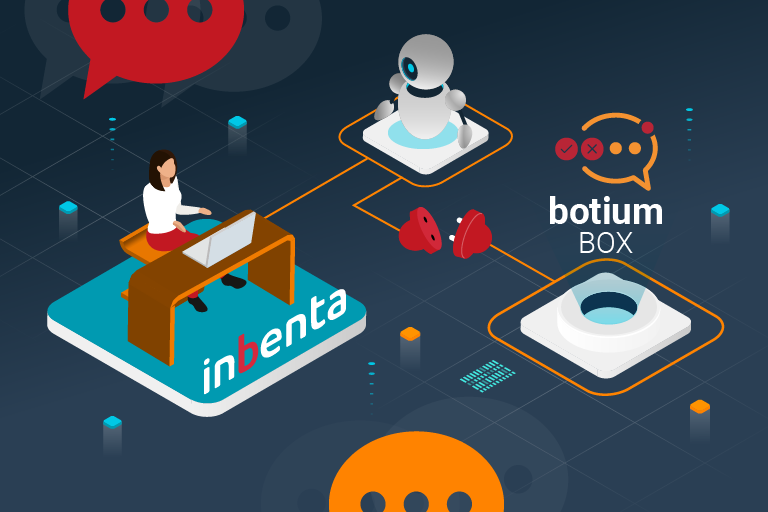
First, we need the API key and the secret key of our Inbenta chatbot:
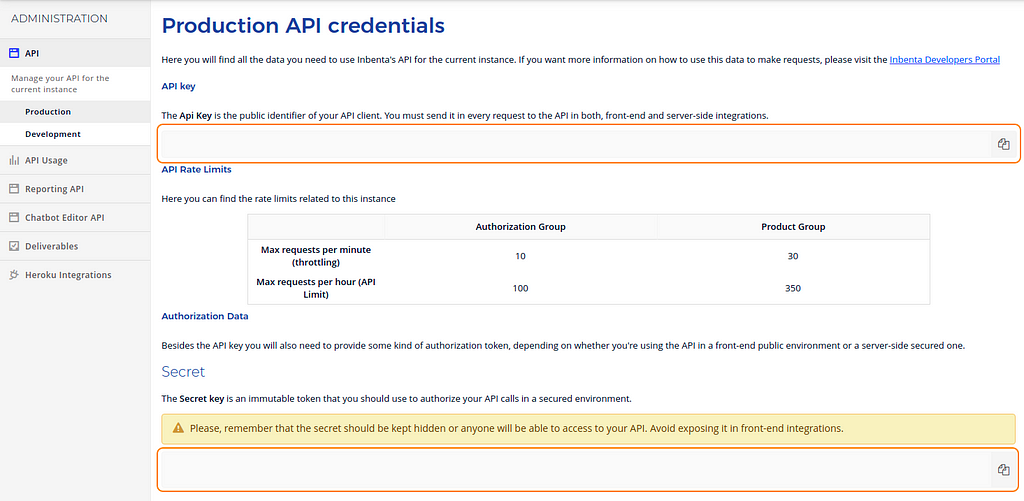

You can read about the Inbenta credentials here.
You have to use these credentials in order to establish the connection in the Botium Box. The first step is to push the register new chatbot button in Botium Box.
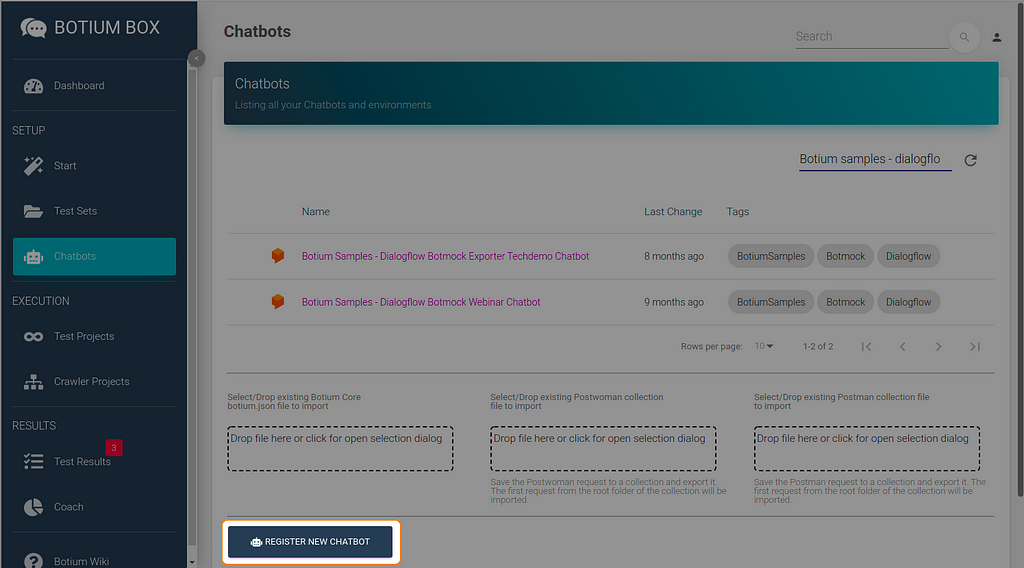
Fill the form with the credentials you found in your Inbenta platform.
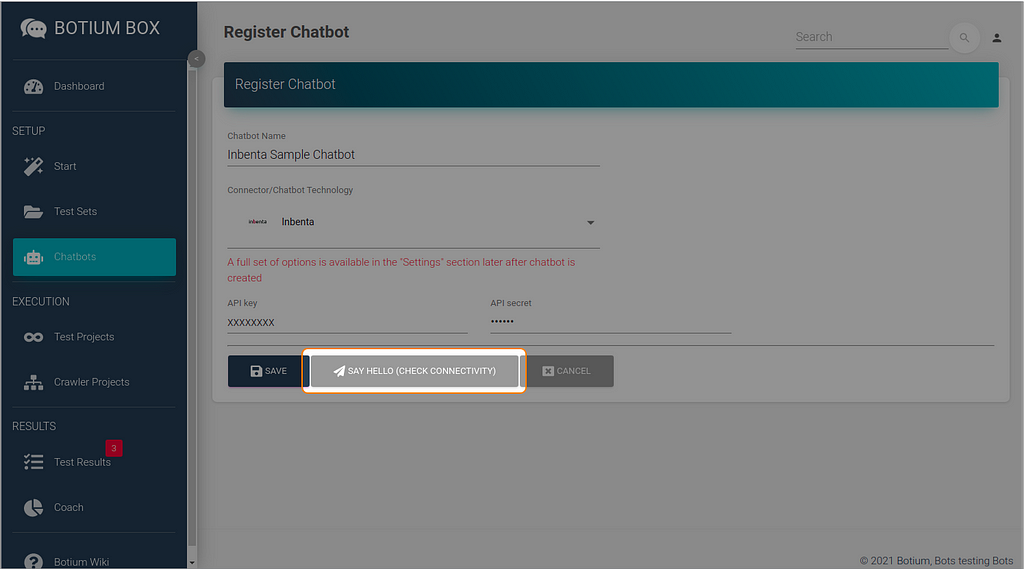
Trending Bot Articles:
2. Automated vs Live Chats: What will the Future of Customer Service Look Like?
4. Chatbot Vs. Intelligent Virtual Assistant — What’s the difference & Why Care?
Afterwards, click on the “say hello” button to check the connectivity. You will receive something like this (in case your connection is successful):
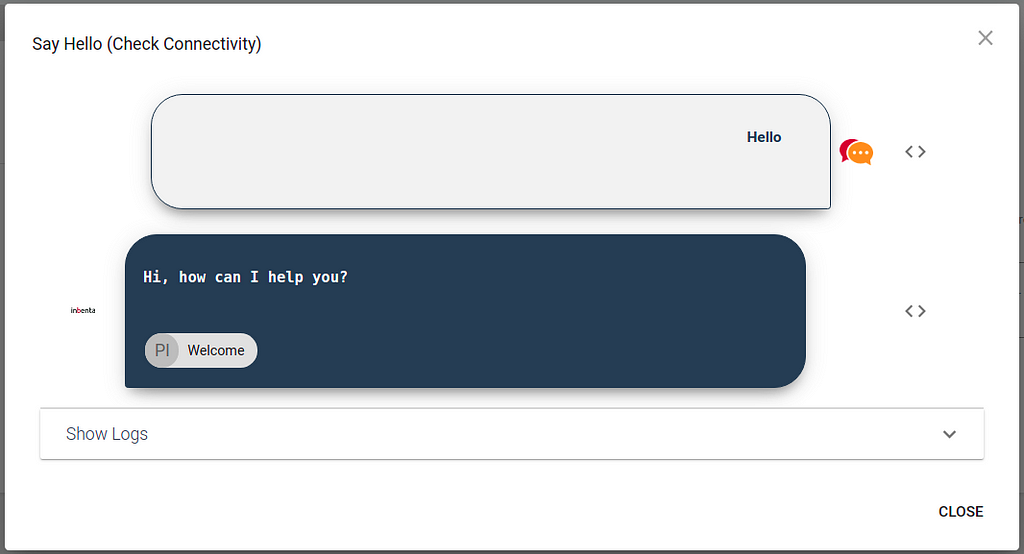
After you push the “save” button, the basic configuration is done.
You can find some more advanced configurations in the chatbot settings: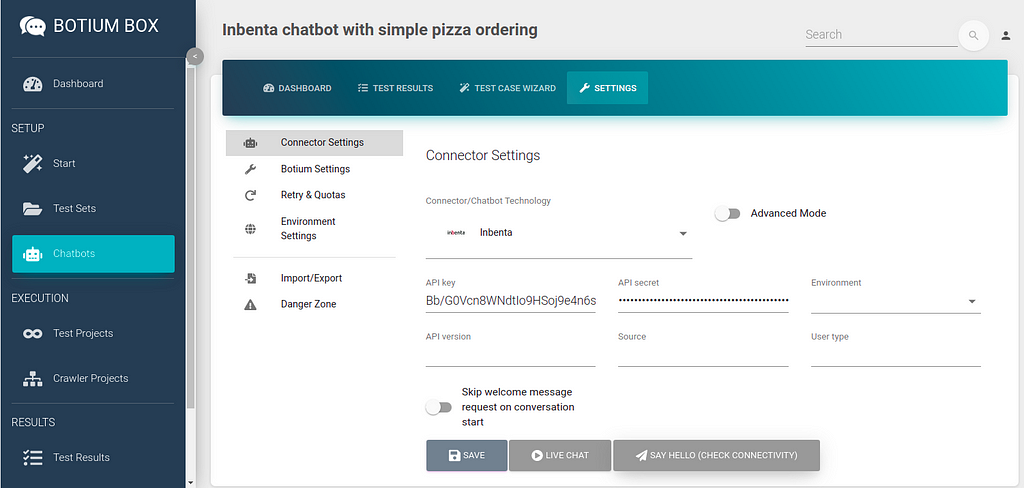
You can define here who starts the conversation (In most cases your chatbot will start the conversation with a general introduction, or some basic instructions. If your bot is waiting for the user to start the conversation instead, you have to skip the welcome message here).
All other settings are Inbenta specific:
- Environment: Resource environment from the Inbenta knowledge base to which the request is applied. Each environment logs the data for the reports displayed in Inbenta dashboards separately. Possible options are:
- Production (default): This environment retrieves the contents/categories published live.
- Test: This environment retrieves the contents/categories published in edit.
- API version: Inbenta API version. Its default is v1.
- Source: Source identifier (e.g. facebook, mobile, etc.) used to filter the logs in the Inbenta dashboards. You can use any value you want. Default is ‘Botium’.
- User type: Profile identifier from the Inbenta backstage knowledge base. Default: 0
And that’s all, your Inbenta chatbot is connected to Botium Box.
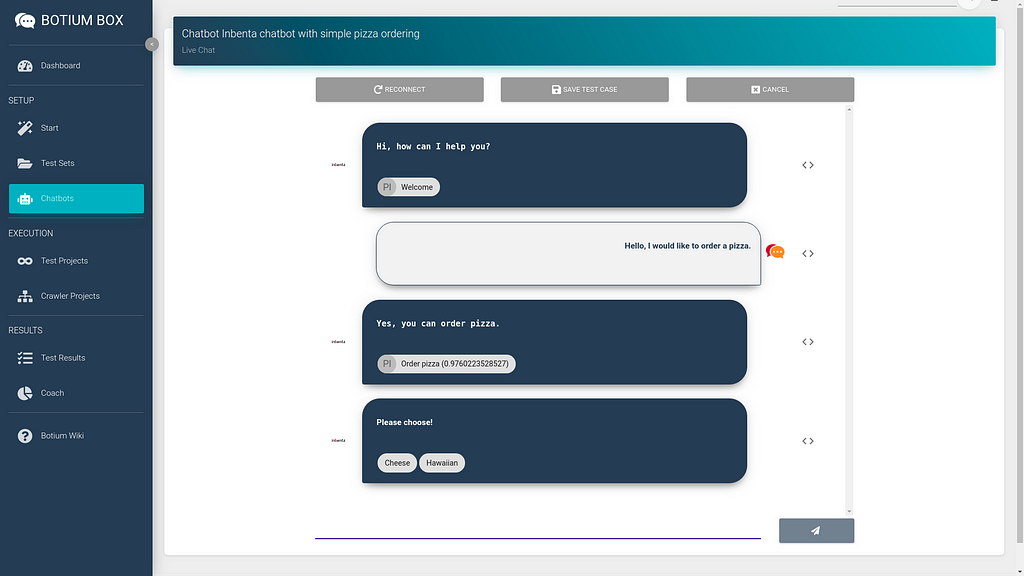
If you did not use Botium Box before, you can read Get Started with Botium Box.
As you can see, connecting your Inbenta chatbot to Botium is extremely simple and anyone can do it without any test automation experience. Once the connection is in place, you no longer have to do this again, your chatbot will be connected to Botium forever.
Please Note: The Inbenta connector is not part of the free Botium Box Mini, but in case of a specific interest, we can set up a 30-days PoC at any time so you can try it in production.
Don’t forget to give us your 👏 !



Register an Inbenta Chatbot to Botium Box was originally published in Chatbots Life on Medium, where people are continuing the conversation by highlighting and responding to this story.
-
Instagram AI Chatbots Will Be Sellers while Products Will Be Services
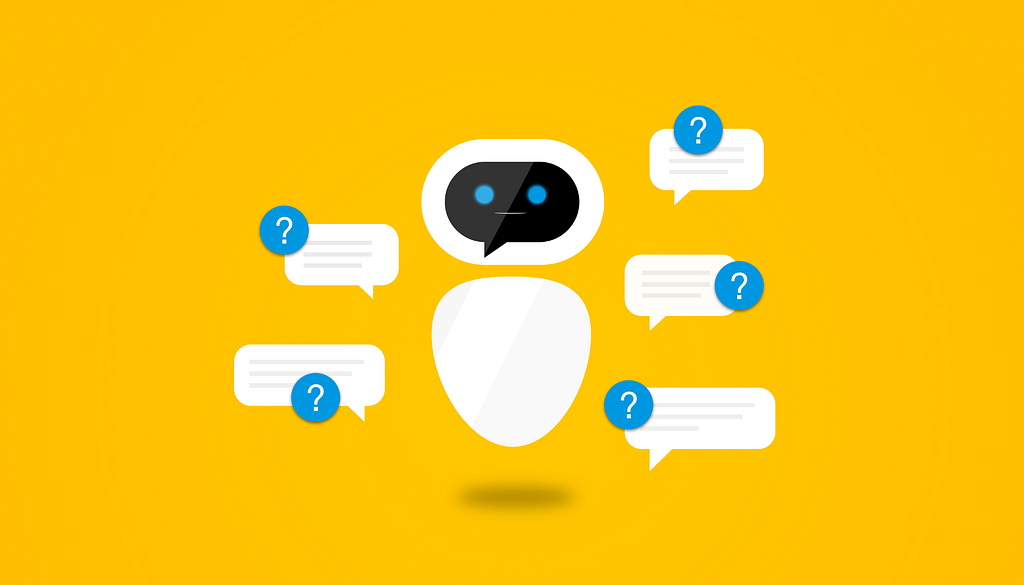
Although intelligent agents have been extensively reported in both the specialized media and mass media, the communication and marketing areas of most brands haven’t used them widely yet. Some brands use smart agents or assistants in their customer service and in relation to consumers, but it’s still in its early days.
This technology will be predominant soon, not only in relations between customers and companies but also in the transformation of products into new services for consumers.
The way that artificial intelligence interacts with “consumer experience” is of critical importance for marketers.

According to Cukier (2021), the core quality of AI is that it can exceed human capabilities, allowing radical improvements in products and services, thus improving the consumer experience, producing new and beneficial experiences for customers. Thus, we need to understand that the main characteristic of AI is that it is not something you can buy directly; it is an “intermediate good” — like electricity or microprocessors. It manages something, but it is not the thing itself. This new technology will carry out tasks better than a human being in terms of speed, scale, accuracy and cost therefore.
This technology presents new challenges and opportunities for CMO’s brands. Certainly, all companies will be impacted by this transformation that is starting. It is essential to understand how it will work and take the best strategic advantage of this new reality.
“Chatbot” is a combination of “chat” and “robot.”
One of the most obvious uses of AI in companies is human-computer interaction via various interfaces, particularly chatbots or intelligent assistants, regardless if they are commanded by voice or text. “Chatbot” is a combination of “chat” and “robot.” According to the Oxford English Dictionary, a chatbot is a program designed to stimulate conversations with human users, especially on the internet. However, a chatbot is defined by a computer program designed to converse and interact with people using natural language, which may be written or spoken.
Trending Bot Articles:
2. Automated vs Live Chats: What will the Future of Customer Service Look Like?
4. Chatbot Vs. Intelligent Virtual Assistant — What’s the difference & Why Care?
This technology has caused a dramatic shift in customers’ experience, allowing communication between them and brands to rapidly increase. This ease grew with the emergence of social networks and well-known search engines, giving quick and accurate responses. It changed the behavior of consumers, who increasingly prefer autonomy in customer service and even self-service. They want answers and services anywhere, anytime, and usually without any form of interaction with brand representatives.
What are the benefits of chatbots for customers and businesses? There are three main positive aspects of chatbots: service extension, stress reduction and instant response. Previously, contacting a company took time and a lot of effort. A customer had to call the company or write an email and wait days or even weeks for a response. The implementation of chatbots can eliminate the pain of these tedious procedures such as contacting companies.
This new behavior is changing the business. Companies are answering questions and dealing with queries faster, trying to let their users process their experience by themselves through self-service and to provide improved customer service. Businesses are preparing for easy, instant communication with their customers, facilitating purchases and other functions such as usage tips and questions. Messaging platforms have chat functions that engage customers and meet their needs, like ordering goods without delay.
In addition, bots also offer the possibility of extending services being available anytime and any day of the week. There is a link between a chatbot and other services provided by other companies. For example, a commercial airline’s chatbot can be connected to Taxify and Airbnb.
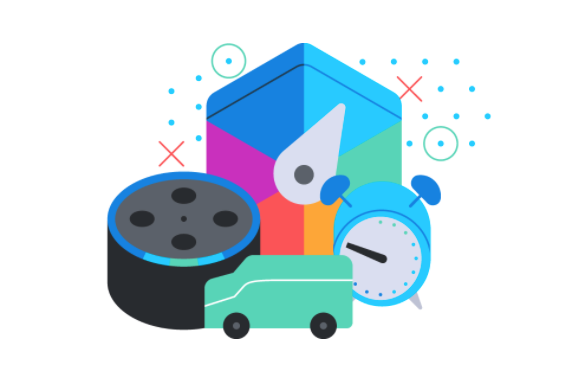
Alexa has already been connected to Airbnb, Uber, Amazon Music, Apple Music, Deezer, iHeartRadio, Pandora, SiriusXM, Spotify, Tidal, TuneIn and Vevo. Alexa is available directly on Amazon’s Echo devices and on many third-party devices such as speakers and TVs and via Alexa smartphone app as well. It is also available in some cars and some wearables. This is a great opportunity for some home appliance brands to take a big step and go from offering just physical products to becoming service providers for their customers. For example, you can see the Ring Video Doorbell on your Echo Show and you can do the same with Arlo cameras. Also, you are able to connect Alexa to your Philips Hue lamps and other ones, such as Ikea ones, to turn them on and off by voice, or connect to heating controls to check and change the temperature in your home.
This transformation of products into services or “servitization” (with apologies for this clumsy new term) is gaining popularity (Cukier, K., 2021). It describes AI’s effect on many everyday consumer items, transforming them from standalone products into services, giving them “senses” and “intelligence” to make judgments. A map is one of the bright examples. It used to be a paper product. However, due to digitization and AI, maps have become a service, showing users the most effective route, and updating it in real time based on traffic flows. In some cases, the business model shifts from a one-time sale to revenue from a recurring subscription. For example, a digital watch may become a fitness tracker or health monitor (Cukier, K., 2021).
One more relevant point is that these agents learn from experience, they start understanding the characteristics of their users and supply the company with data that will be useful in the future development of new products and services. Obviously, such issues as privacy, ethics and legal compliance are crucial, to avoid exposing customers’ sensitive data. Customers only want chatbots to be well designed and efficient. They must be able to offer easy solutions to users’ demands. Chatbots may not necessarily have deep human conversations, but they must be able to accurately respond to questions and demands. It is essential to emphasize that the use of these intelligent agents implies a very intimate human-machine relationship and requires people to trust companies. Such relationships can become lasting.
Thus, it is fundamental for brands to be completely transparent in these relations, making it clear that conversations are being mediated with the help of a machine, what data they are capturing and what they intend to do with it. They will come to trust in this new form of relationship only by clearly and objectively providing information to customers
The business landscape is changing very quickly to such an extent that it is hard for us to keep track of all these changes. All products will “do” things and not just “be” things soon.
Don’t forget to give us your 👏 !



Instagram AI Chatbots Will Be Sellers while Products Will Be Services was originally published in Chatbots Life on Medium, where people are continuing the conversation by highlighting and responding to this story.
-
How Chatbots Will Change the Digital World
Artificial intelligence is now being used to improve the performance of chatbots. Most bots, on the other hand, are now implemented in a relatively straightforward manner. Specific keywords are typically checked for on Twitter and Facebook, and prefabricated messages or text modules are then automatically played out based on the results. Systems that automatically recognize significant text findings on the Internet and then put them together to produce a post are a little more intelligent.

The phrase “robot journalism” is used to describe this type of automated information curation. Chatbots use complex natural language processing (NLP) methods to convert the running text into corresponding semantics and signal words, allowing them to capture the posts appropriately.
Connecting chatbots to knowledge databases is another option. Chatbots appear to be “intelligent” to users because of their ability to provide information. Chatbots, on the other hand, are only as intelligent as the database that powers them.
Trending Bot Articles:
2. Automated vs Live Chats: What will the Future of Customer Service Look Like?
4. Chatbot Vs. Intelligent Virtual Assistant — What’s the difference & Why Care?
Chatbots can be made more intelligent in the future, thanks to advancements in AI. Chatbots powered by artificial intelligence (AI) learn mostly independently from the vast volumes of online data and recognize question-and-answer patterns that they utilize in consumer communication automatically.
The example of Microsoft Tay, on the other hand, demonstrates how community-controlled bot training can have disastrous effects. The next generation of AI-based bots must be able to regulate and create space for dialogue.
You can also read about :
Guide to conversation management and how to build a chatbot?
Don’t forget to give us your 👏 !



How Chatbots Will Change the Digital World was originally published in Chatbots Life on Medium, where people are continuing the conversation by highlighting and responding to this story.


